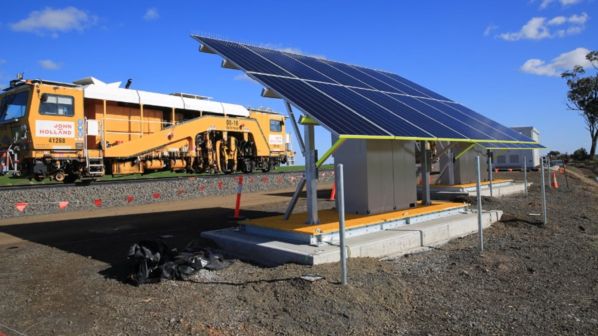AUSTRALIA’s Inland Rail Project will install 82 solar-powered signalling sites between Albury in New South Wales (NSW) and Gowrie in Queensland. This will remove the need to use local power infrastructure or acquire easements to transmit mains power to the railway reducing the impact on adjacent landowners.
Australian Rail Track Corporation (ARTC), which is delivering the freight line linking Melbourne and Brisbane, decided to proceed with the solar system after a successful trial at Coolleearlee in NSW.
The interim CEO of ARTC, Ms Rebecca Pickering, said that the solar-powered test site saved ARTC around $A 300,000 ($US 198,628), mostly by removing the need to build a new transmission line between the site and the electricity grid. The use of solar power also reduced the amount of trackside infrastructure required when compared with mains equipment, as well as more than $A 10,000 per year in operational electricity costs.
“The solar system is designed with battery back-up that provides for 10 days of back-up operation and delivers a system which runs 24 hours a day, 365 days a year,” says Inland Rail project manager, communication and wayside monitoring, Mr Matt Brown. “The signalling system at Coolleearlee, around 50km from Moree, is currently being used to support the crossing loop that will operate in the area.
“Delivering power to rural signalling systems can be a real challenge so the successful completion of this solar-powered system in Coolleearlee is a great outcome.”
“We also use remote monitoring technology on these solar-powered signalling installations, which adds further savings by reducing the requirement for maintenance visits,” Pickering says. “We always aim to minimise disruption to local communities, so using solar rather than mains power is a great result for the local community too.”

